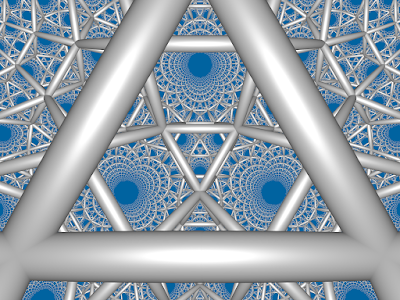Rectified {4,4,4}

Rectified {4,4,4} The regular {4,4,4} has square tiling cells. The vertex figure is a square tiling too. https://en.wikipedia.org/wiki/Order-4_square_tiling_honeycomb Therefore, the rectified {4,4,4} contains rectified square tiling cells and square tiling cells. We saw earlier that a rectified square tiling is just another square tiling, so the rectified {4,4,4} has square tiling cells and square tiling cells. Wait a minute, that's just one kind of cell...and hmmmm...that cell is regular. This doesn't sound like a uniform honeycomb. And indeed it isn't. The rectified {4,4,4} is the regular {4,4,3}! This came as a surprise to me when I saw the rendering. It's the only honeycomb to do this after rectification, so I thought it would be a good one to end on. While there are 15 regular honeycombs in hyperbolic space, rectification produces just 14 new honeycombs. I hope you enjoyed having these pictures trickle out one-a-day. I'll likely jump back into less f...











